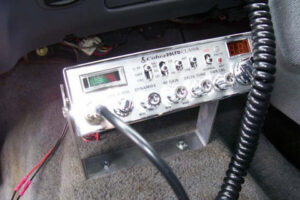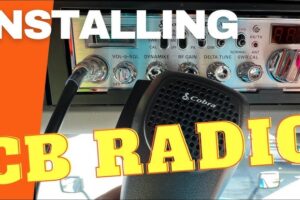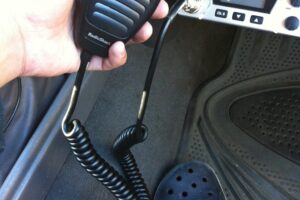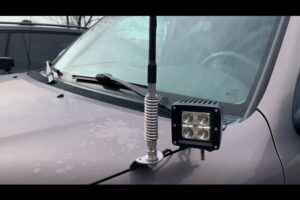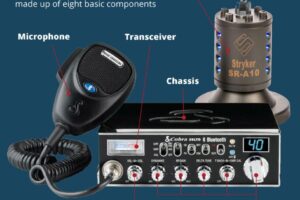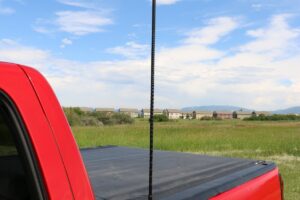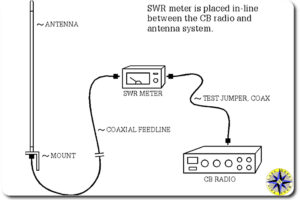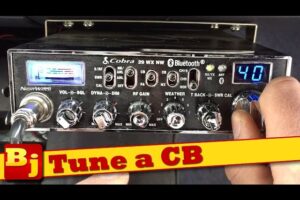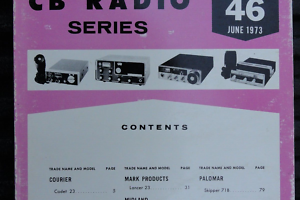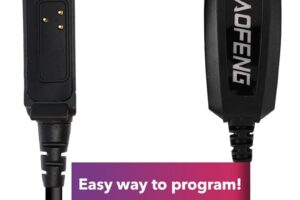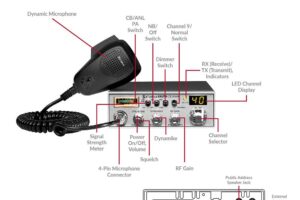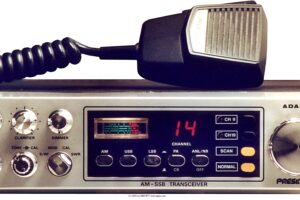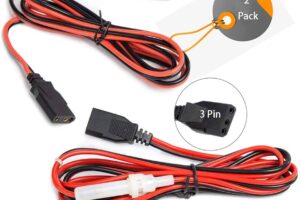How to Install CB Radio: Step-by-Step Guide for Beginners
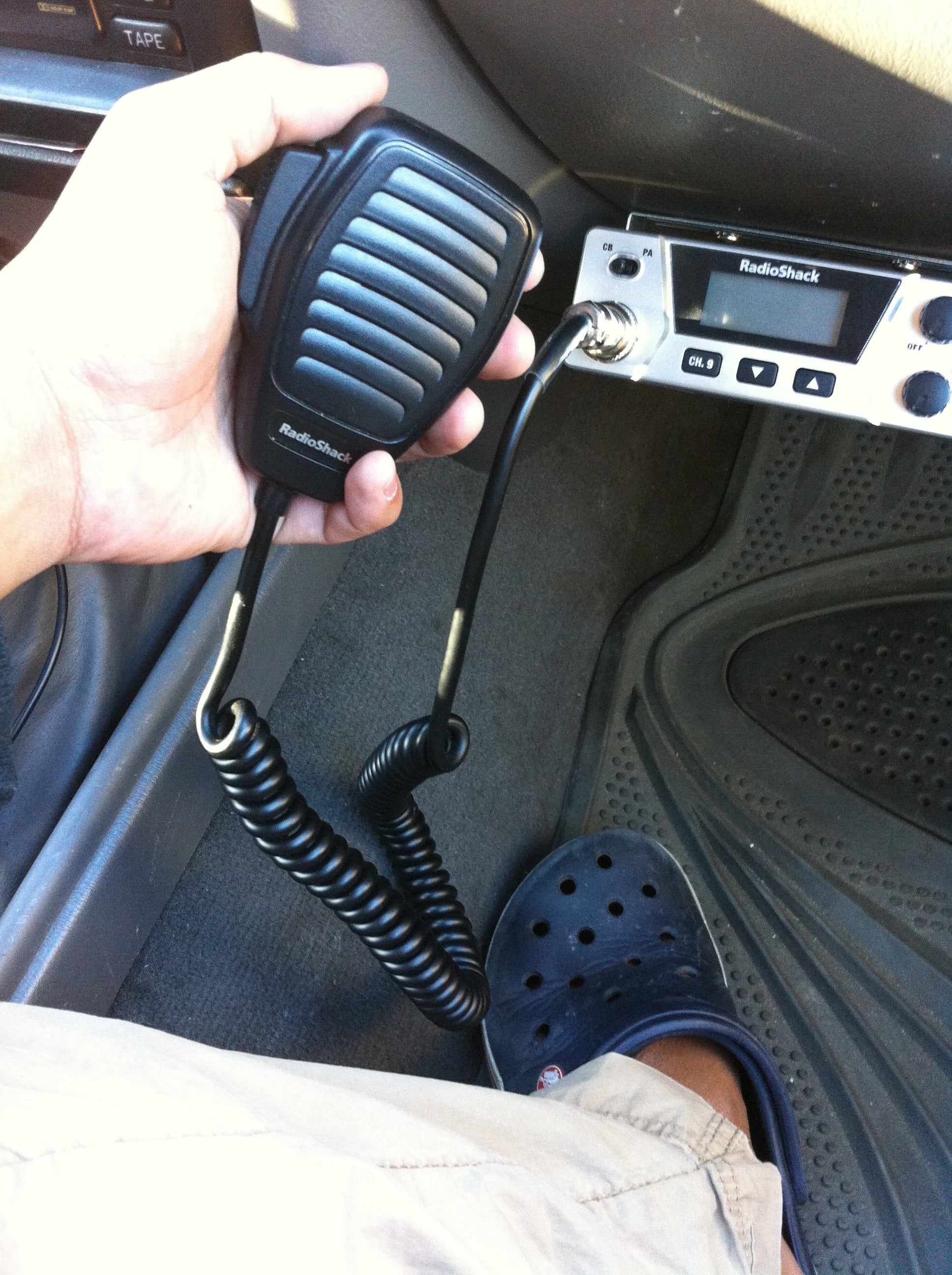
Installing a CB radio in your vehicle is straightforward. This guide will help you do it step-by-step.
Many people use CB radios for communication on the road. They are popular among truck drivers, off-road enthusiasts, and travelers. Installing one in your car or truck can enhance your trips. You will be able to stay connected, seek help, or get traffic updates.
This blog post will show you how to install a CB radio easily. We will cover everything from choosing the right spot to mounting and wiring the unit. By the end, you will have a working CB radio in your vehicle. Let’s get started on this simple yet useful project!
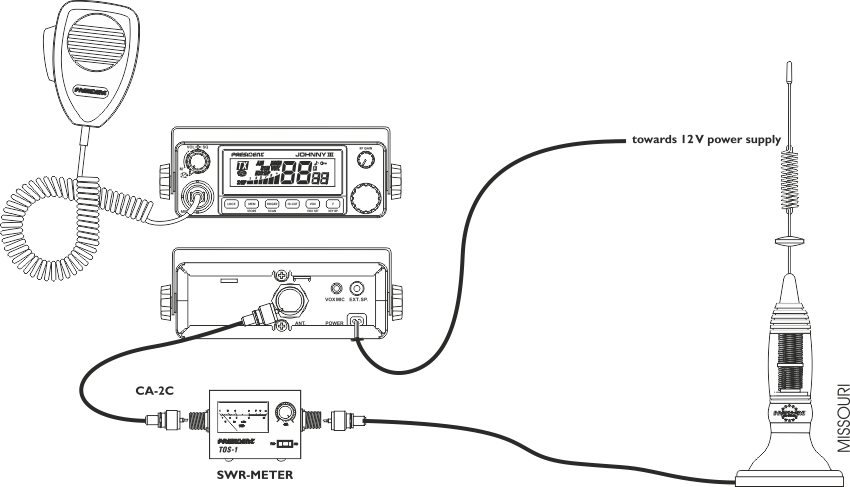
Credit: www.mera-cb.com
Introduction To Cb Radios
Installing a CB radio can seem daunting. But with the right guidance, it becomes a straightforward task. This guide will introduce you to CB radios. You’ll learn what they are and their benefits.
What Is A Cb Radio?
A CB radio, or Citizens Band radio, is a two-way communication device. It operates on 40 shared channels within the 27 MHz band. No license is needed for use. Truckers, hobbyists, and emergency services often use CB radios.
These radios allow short-distance communication. They are reliable, especially in rural or remote areas. Users can talk to each other on the same channel. This makes coordination easier during trips or events.
Benefits Of Using A Cb Radio
CB radios offer several advantages. First, they are cost-effective. You don’t need a subscription or service plan. They provide unlimited use after purchase.
They also enhance safety. In emergencies, you can call for help. Other drivers or emergency services can respond quickly. This is especially useful where cell service is weak.
CB radios also promote community. Users often share traffic updates, weather conditions, and road hazards. This helps everyone stay informed and safe.
Finally, they are easy to use. Basic functions include changing channels, adjusting volume, and pressing the talk button. Anyone can learn to operate a CB radio quickly.

Credit: www.youtube.com
Choosing The Right Cb Radio
Choosing the right CB radio can be a daunting task. With numerous options available, it’s easy to feel overwhelmed. But don’t worry! This guide will help you make an informed decision.
Types Of Cb Radios
CB radios come in different types. The most common are mobile, handheld, and base station CB radios. Mobile CB radios are installed in vehicles. They are perfect for truckers and off-road enthusiasts. Handheld CB radios are portable. They are great for outdoor activities. Base station CB radios are used at home. They offer the best range and power.
Key Features To Consider
When selecting a CB radio, consider the following features. First, check the number of channels. Most CB radios offer 40 channels. This allows for better communication. Next, look at the radio’s power output. The maximum legal output is 4 watts. This ensures optimal performance.
Another important feature is the size and mounting options. Make sure the radio fits your vehicle. Also, check if it has an easy mounting system. Look for radios with built-in SWR meters. They help in tuning the antenna for better performance. Lastly, consider additional features. These include weather channels, noise filters, and public address systems.
Essential Tools And Materials
Gather a CB radio, an antenna, a mounting bracket, and a coaxial cable. You will also need basic tools like a screwdriver and a wrench.
Installing a CB radio can be a rewarding project, but having the right tools and materials is crucial for a smooth installation. Whether you’re a seasoned pro or a first-time installer, knowing what you need can save you time and frustration. Let’s dive into the essential tools and materials required to get your CB radio up and running.Required Tools
You don’t need a full workshop to install a CB radio, but there are a few must-have tools. A basic screwdriver set will be your best friend. You’ll need it to mount the radio and antenna. Wire cutters and strippers are essential for making clean connections. You’ll use them to trim and prepare wires for attaching to your power source and grounding. A multimeter can help you check your connections and ensure your power source is delivering the right voltage. It’s a handy tool that can prevent a lot of troubleshooting later on.Additional Accessories
While the required tools will get your radio installed, a few additional accessories can improve your setup. A good-quality coaxial cable ensures a strong signal between your radio and antenna. Look for one with low loss ratings. An SWR meter is a valuable tool for tuning your antenna. It helps you adjust your antenna for optimal performance, ensuring clear communication. Consider adding a noise filter if you experience interference from your vehicle’s electrical system. It can make a significant difference in the clarity of your transmissions. What tools have you found indispensable in your DIY projects? Do you have any tips for first-time CB radio installers? Share your thoughts in the comments! By ensuring you have the right tools and materials, you’re setting yourself up for a successful CB radio installation. Happy communicating!Preparing For Installation
Gather all necessary tools and parts before starting the installation of your CB radio. Clear a clean workspace to keep everything organized.
Preparing for Installation Before you start installing your CB radio, it is essential to prepare properly. This step ensures a smooth process and helps avoid potential issues. Let’s dive into some vital preparations.Selecting The Installation Location
Choosing the right spot for your CB radio is crucial. You want a location that’s easy to access but doesn’t interfere with driving. Consider mounting your radio on the dashboard or near the center console. These spots allow you to reach the controls without taking your eyes off the road. Think about your vehicle’s layout and your comfort. Ensure the chosen location doesn’t block air vents or other essential functions.Safety Precautions
Safety should always be your top priority. Before starting the installation, disconnect the vehicle’s battery. This prevents any accidental electrical shorts. Use proper tools like wire strippers and crimpers. They make the job easier and help avoid damage to wires. Double-check your connections and secure all wiring. Loose wires can be hazardous and cause your radio to malfunction. Are you ready to get started with your CB radio installation? Remember, preparation is key to a successful setup.Mounting The Cb Radio
Mounting the CB radio is an important step in the installation process. Proper placement ensures the radio works effectively and remains easy to use. There are different mounting options to consider, each with its own benefits. Let’s explore two popular choices: dashboard mounting and overhead mounting.
Dashboard Mounting
Dashboard mounting is a common choice for many users. It keeps the radio within easy reach. To start, find a flat spot on your dashboard. Clean the area to remove dust and dirt. This ensures the mount sticks well. Use a pencil to mark the spot where you’ll place the mounting bracket.
Next, drill small holes at the marked spots. Be careful not to damage any wires behind the dashboard. Attach the mounting bracket using screws. Make sure the bracket is secure. Once the bracket is in place, attach the CB radio. Double-check that it is firmly attached and does not move.
Overhead Mounting
Overhead mounting is another effective option. It keeps the radio out of the way but still accessible. Start by finding a suitable spot on your vehicle’s ceiling. Clean this area to ensure a secure attachment. Use a pencil to mark where the mounting bracket will go.
Drill small holes at the marked spots. Be careful to avoid any wires or other components. Attach the mounting bracket with screws. Make sure it is secure. Attach the CB radio to the bracket. Check to ensure the radio is firmly attached and does not move.
Both mounting options have their benefits. Choose the one that fits your needs and vehicle best. Ensuring a secure mount is key to a successful CB radio installation.
Connecting The Power Source
Connecting the power source is a crucial step in installing your CB radio. A reliable power connection ensures your radio functions correctly and maintains consistent communication. You have two primary options: direct battery connection or using the vehicle’s fuse box.
Direct Battery Connection
One of the most straightforward ways to power your CB radio is by connecting it directly to the vehicle’s battery. This method offers a stable and uninterrupted power supply.
To do this, you need to run the power cable from the radio to the battery terminals. Ensure you use the right gauge wire to prevent overheating.
Connect the red wire to the positive terminal and the black wire to the negative terminal. Don’t forget to add an inline fuse on the positive wire to protect your radio from power surges.
Using The Vehicle’s Fuse Box
If direct battery connection seems daunting, you can opt to use the vehicle’s fuse box. This method is usually more convenient and allows for a cleaner installation.
Locate an unused slot in the fuse box that matches the amperage required by your CB radio. You can use a fuse tap to draw power from this slot.
Make sure the fuse tap has the correct fuse rating. Connect the power cable from the radio to the fuse tap and ground it to a metal part of the vehicle’s chassis.
Have you ever tried installing a CB radio? Which method did you find easier for connecting the power source?
Antenna Installation
Installing the antenna is a crucial step in setting up your CB radio. A properly installed antenna ensures clear communication and maximizes the radio’s performance. This section covers choosing the right antenna and mounting it effectively.
Choosing The Right Antenna
Not all antennas are the same. Choose one that suits your needs and vehicle type. Consider the antenna’s length, material, and mounting style. Longer antennas often provide better range and clarity. Fiberglass and stainless steel are popular materials due to their durability.
Ensure the antenna is compatible with your CB radio model. Check the frequency range and impedance. A mismatched antenna can result in poor signal quality. Look for reviews and recommendations from other CB radio users. They can guide you in selecting a reliable antenna.
Mounting The Antenna
Mount the antenna in a location that ensures optimal signal reception. Common mounting spots include the roof, trunk, or bumper of your vehicle. Higher mounting positions generally offer better performance. Avoid placing the antenna near metal objects that can interfere with signals.
Secure the antenna firmly using the appropriate mounting brackets. Ensure it is stable and won’t move while driving. A loose antenna can lead to signal loss or damage. Use a grounding wire to reduce noise and improve signal clarity. Proper grounding is essential for effective communication.
Test the antenna after installation to check for any issues. Use a SWR meter to measure the antenna’s performance. Adjust the antenna if necessary to achieve the best signal quality. Regular maintenance and checks can ensure your antenna remains in top condition.
Final Setup And Testing
Ensure all connections are secure and the antenna is properly mounted. Test the CB radio by adjusting the settings and conducting a communication check. Verify signal strength and clarity for optimal performance.
You’ve mounted your CB radio, connected the power, and attached the antenna. Now, it’s time for the final setup and testing. This is where you’ll make the necessary adjustments to ensure your CB radio performs at its best.Adjusting The Swr
Before you start chatting away, you need to adjust the Standing Wave Ratio (SWR). SWR measures the efficiency of the signal being transmitted. High SWR can damage your radio and reduce its range. To adjust the SWR, you’ll need an SWR meter. Connect the meter between your radio and antenna. Then, follow the meter’s instructions to find the SWR reading. Aim for an SWR reading of 1.5 or lower. If the reading is too high, adjust the antenna length. This may take a few tries, but it’s worth the effort.Performing A Test Transmission
Once your SWR is set, it’s time to perform a test transmission. This step ensures your radio is transmitting clearly and receiving signals properly. Turn to channel 19, the most commonly used channel. Press the microphone button and speak clearly. “This is [Your Call Sign], performing a radio check.” Listen for a response. If someone replies, ask for feedback on your signal clarity. Adjust the microphone gain if needed. If you don’t get a response, try another channel or ask a friend with a CB radio to help. This confirms that your setup is working. Final setup and testing might seem tedious, but it’s crucial. Proper adjustments ensure your CB radio operates efficiently and lasts longer. Have you ever experienced issues with your CB radio setup? Share your tips and tricks in the comments!Troubleshooting Common Issues
Learn how to install a CB radio by following simple steps. Ensure proper connections, mount the antenna, and tune for clear reception. Troubleshoot common issues like poor signal or interference easily.
Installing a CB radio can sometimes be frustrating. You might encounter several issues. Knowing how to troubleshoot these problems can save you time and effort. Here, we will discuss two common issues: poor signal quality and interference problems.Poor Signal Quality
Poor signal quality can ruin your communication experience. First, check your antenna. Ensure it is properly mounted and grounded. A loose antenna can cause signal issues. Next, inspect the coaxial cable. Look for any signs of damage or wear. Replace the cable if necessary. Also, make sure the cable connections are tight. Sometimes, the problem might be the location. Try moving your vehicle to an open area. Buildings and trees can block the signal. Make sure nothing is obstructing the path of your signal. Lastly, check your radio settings. Adjust the squelch and RF gain settings. Improper settings can affect signal quality.Interference Problems
Interference can disrupt your CB radio communication. Electrical devices can cause this issue. Start by turning off nearby electronics. This includes mobile phones, GPS devices, and other radios. Check for any loose connections. Loose connections can create interference. Tighten all connections to ensure a stable setup. You might also need to check your grounding. Poor grounding can cause interference. Make sure your radio and antenna are properly grounded. Use a noise filter if interference persists. Noise filters can help reduce unwanted noise. Install the filter between your CB radio and the power source. By following these steps, you can resolve many common CB radio issues. Enjoy clear and uninterrupted communication. “`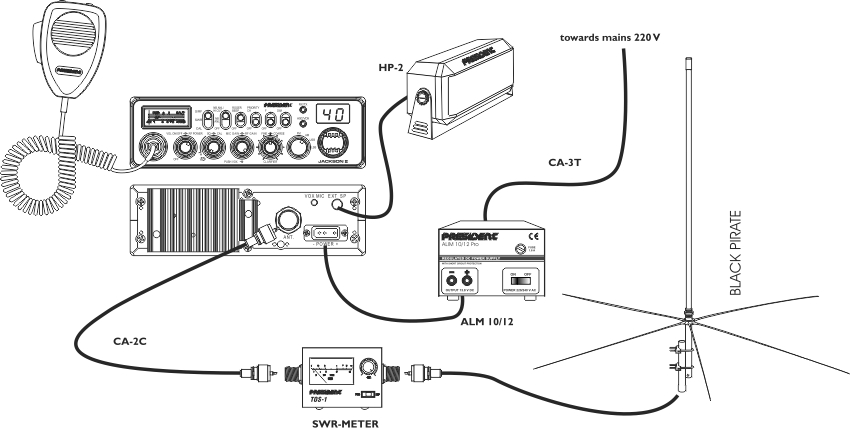
Credit: www.mera-cb.com
Maintenance Tips
Keeping your CB radio in top condition requires regular maintenance. This ensures optimal performance and longevity. Below are some essential tips to keep your CB radio running smoothly.
Regular Check-ups
Inspect your CB radio periodically. Look for signs of wear and tear. Check the connections and cables. Ensure there are no loose parts. Test the radio to ensure it transmits and receives signals clearly. Regular check-ups prevent small issues from becoming big problems.
Cleaning And Storage
Clean your CB radio regularly. Use a soft cloth to wipe the surface. Avoid using harsh chemicals as they can damage the device. Clean the microphone and speaker openings. This prevents dust buildup and maintains sound quality.
Store your CB radio properly when not in use. Keep it in a cool, dry place. Avoid exposing it to extreme temperatures. Proper storage prolongs the life of your radio.
Frequently Asked Questions
Are Cb Radios Hard To Install?
Installing CB radios is generally easy. Basic tools and a little time are usually all you need. Follow the instructions provided.
Can You Run A Cb Radio Off A Cigarette Lighter?
Yes, you can run a CB radio off a cigarette lighter. Ensure the radio’s power requirement matches the lighter’s output. Use an appropriate adapter or plug for connection. Check the vehicle’s voltage and circuit compatibility to prevent overload or damage.
Always follow the manufacturer’s instructions for safe usage.
How Long Does It Take To Install A Cb Radio?
Installing a CB radio usually takes about 1 to 2 hours. This depends on your experience and vehicle type.
How Do I Power My Cb Radio In My House?
Use a 12V DC power supply to power your CB radio at home. Ensure the supply matches the radio’s voltage and amperage requirements. Connect the power supply’s positive and negative terminals to the corresponding terminals on the radio.
Conclusion
Installing a CB radio can be simple with the right steps. Start with gathering your tools and materials. Ensure your radio and antenna are compatible. Follow the instructions closely for a successful setup. Double-check your connections to avoid issues. Practice using your CB radio once installed.
This builds your confidence in handling it. Remember to maintain your equipment regularly. Keep it clean and check for any damages. Enjoy the benefits of clear communication on the road. Happy driving and stay safe!

